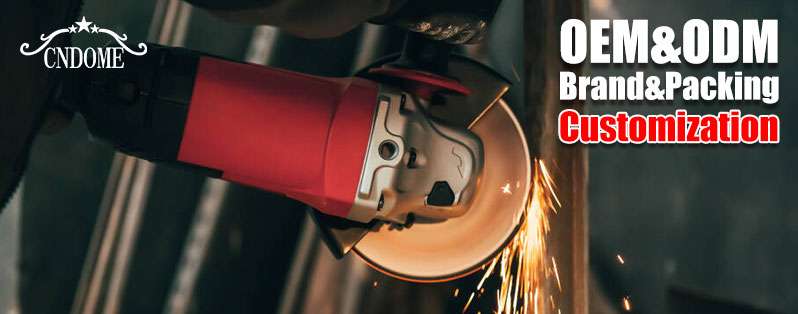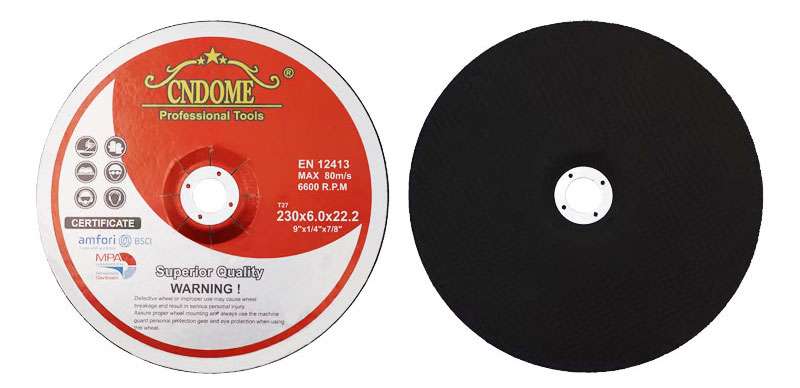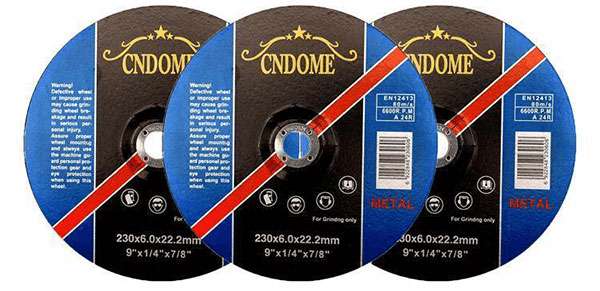A 9-inch grinding wheel is a powerful tool designed for large-scale metalworking tasks. When working with metals like steel, aluminum, or iron, selecting the right wheel ensures efficient cutting, shaping, or finishing while reducing wear on the tool. This blog will cover the key considerations for choosing a 9-inch grinding wheel for metal and how it can be best applied in different tasks.
1. Material Compatibility
When selecting a grinding wheel for metal, it’s important to choose one specifically designed for the metal type you are working on:
- Ferrous Metals (e.g., steel, iron): Use an aluminum oxide-based grinding wheel.
- Non-Ferrous Metals (e.g., aluminum, copper): Use silicon carbide or specialized non-ferrous metal grinding wheels, as aluminum oxide can clog up when working on soft metals.
2. Bond Type
The bond in a grinding wheel holds the abrasive grains in place, and it affects how the wheel wears down. For metal grinding:
- Resinoid Bond (B): Known for their durability, resinoid bonded wheels are often used for metal grinding tasks because they provide an efficient cutting rate and good wear resistance.
- Vitrified Bond (V): Vitrified bonds offer more precision and are ideal for fine-tuned work, though they tend to be more brittle and less flexible than resinoid wheels.
3. Grit Size
The grit size determines the coarseness of the wheel:
- Coarse Grit (16-24): Best for heavy-duty removal of metal and surface preparation.
- Medium Grit (36-60): Suitable for blending or smoothing after initial material removal.
- Fine Grit (80-120): Ideal for finishing tasks, polishing, or working on thin metal sheets.
4. Hardness Grade
The hardness of a grinding wheel is rated by a letter scale. A wheel that is too soft will wear out quickly, while a wheel that is too hard will have slow cutting action. For most metalworking:
- Medium Hardness (I-N): Offers a balance of wear and cutting speed, making it ideal for general metal grinding.
5. Wheel Structure
The structure of a grinding wheel refers to the spacing between the abrasive grains:
- Open Structure (less dense): Allows for better chip clearance and is ideal when working with softer metals to prevent clogging.
- Closed Structure (more dense): Provides finer finishes and is more durable, ideal for hard metals like steel.
6. RPM Compatibility
It is essential to match the grinding wheel’s speed rating (RPM) to the angle grinder or bench grinder you are using. For a 9-inch grinding wheel, the RPM rating typically falls between 6,000 and 6,500 RPM. Always ensure the wheel’s RPM is higher than or equal to the grinder’s speed.
7. Applications
- Metal Cutting: A 9-inch wheel can cut through metal pipes, rods, and thick sheet metals with precision.
- Surface Grinding: It’s also excellent for removing rust, paint, and burrs from metal surfaces.
- Beveling: Ideal for edge beveling before welding, ensuring strong weld seams.
- Weld Cleanup: After welding, use a 9-inch wheel to grind down the excess weld for a smooth finish.
8. Safety Considerations
When working with a large 9-inch grinding wheel for metal:
- Use Appropriate PPE (Personal Protective Equipment): Always wear safety glasses, gloves, and hearing protection.
- Ensure the Wheel is Properly Installed: Misaligned or loosely installed wheels can break under high-speed rotation.
- Avoid Excessive Pressure: Let the tool do the work; pressing too hard can lead to overheating or wheel damage.
Conclusion
The 9-inch grinding wheel is an excellent choice for large-scale metalworking projects, providing powerful cutting and grinding capabilities. By considering factors like grit size, bond type, material compatibility, and wheel hardness, you can maximize efficiency and ensure a high-quality finish on your metalworking projects. Always prioritize safety and match the wheel’s specifications with your grinding tool for optimal performance.



